2019 Kawasaki Ninja ZX-6R Review - First Ride

Team Green's attempt to revitalize the 600 class
For the past decade we’ve all been witness to the steady decline of the 600 supersport category. It’s amazing to think about, especially considering that, before the economic recession, the four Japanese players in this very same class were pumping out brand new contenders every other year! Since then, however, 600s have become more than stagnant – the class has been teetering on life support. Suzuki and Honda have soldiered on with the same GSX-R600 and CBR600RR for years – the latter even halting sales in Europe due to increasing emissions standards and declining sales. Meanwhile, Yamaha introduced an “update” to its venerable YZF-R6 which amounted to new bodywork, electronics, and a series of relatively minor improvements. Compound that with rising costs rivaling prices for liter-class machines and many questioned the reason to buy a 600.
2019 Kawasaki Ninja ZX-6R
| Engine | 18.0/20 |
| Suspension/Handling | 13.0/15 |
| Transmission/Clutch | 9.0/10 |
| Brakes | 8.0/10 |
| Instruments/Controls | 4.0/5 |
| Ergonomics/Comfort | 8.0/10 |
| Appearance/Quality | 8.5/10 |
| Desirability | 8.0/10 |
| Value | 10.0/10 |
| Overall Score | 86.5/100 |
Kawasaki believes it may have found the answer, and it’s been hiding in plain sight since 2013: introducing the 2019 Ninja ZX-6R. Kawasaki calls the 2019 ZX-6R a new model, and to its credit the bike does get a few choice upgrades: new bodywork, a quickshifter, one tooth smaller front sprocket, adjustable clutch lever, and a new instrument panel with fuel gauge and range display. So, it’d be a lie if we call the 2019 model a carryover, but the same 636cc four-banger is back, as are the frame, chassis, and suspension components from the ZX-6R’s last update in 2013.
This isn’t necessarily a bad thing, as the ZX-6R has been a competent performer for the last five years in a class that hasn’t exactly seen much reason to redefine itself. With a base price of $11,699, the 2018 6R was a hard sell, especially considering the competition were all priced relatively evenly. This is where the 2019 version really distinguishes itself and poses, perhaps, the jolt the supersport category needs. The new ZX-6R offers competitive performance and technology starting at just $9,999. KIBS (Kawasaki lingo for ABS) adds another $1000, while the KRT graphic, which automatically includes KIBS, goes for $11,299 – $100 less than the next closest competitor, Suzuki’s GSX-R600. With this new price in mind, it’s worth reevaluating what we think about the new ZX-6R.
Power for the streets
With its 636cc inline-Four, some could say Kawasaki has been on the “cheater” engine bandwagon long before Ducati ever thought it was cool. The difference between the red and green machines is that many racing organizations have allowed the Kawasaki to compete in traditional Supersport categories.
Racing aside, Team Green’s reasoning for the bigger engine is to give the street rider – which makes up a far greater percentage of 6R customers than racers – more flexibility around town and in the canyons. The little extra punch from having 37 more cubic centimeters than the competition is welcome when riding on the street, as you can carry a gear a little longer when slicing through traffic or simply riding along. Add the change in final drive gearing (one less tooth in the front sprocket, remember) to that little bit more torque, and the middleweight Ninja accelerates with just a tiny bit more gusto than before.
Speaking of street riding, the ZX-6R’s ergos, while unchanged from the previous model, aren’t so bad on the roads. Riding sportbikes on the streets for general commuting just seems silly in my opinion, but if you’re going to do it, the Ninja isn’t a bad place to spend your time. The bars aren’t radically low, and the 32.7-inch seat height doesn’t seem excessively tall thanks to a relatively narrow junction between the fuel tank and seat.
When it comes to sportbikes, the rider’s size and shape have a big influence on wind protection. In the case of 5-foot, 8-inch Trizzle on the highway, the angle of the windscreen directed air straight to my helmet, causing more buffeting than I was expecting. Your mileage may vary depending on your dimensions, but for me, a taller screen would likely be high on my list of changes.
Long-time MO readers will know how much we love having quickshifters on motorcycles, and its inclusion on the ZX-6R (for upshifts only) is something we’re glad to see. However, the unit on the new Ninja isn’t as refined as systems seen on other bikes. In the first three gears, ignition kill time is too long, causing a longer delay than needed between power cutting, gear changing, and power reapplied. This happened across the rev range and on more than one motorcycle, so it’s highly unlikely this was an isolated incident.
In its standard settings, the Showa 41mm SFF-BP fork and accompanying rear shock draw a fine balance between firmness and composure through twisty bits and compliance over rough roads. It’s been several years since I last rode a ZX-6R on the streets, and our road ride to Mount Charleston, on the outskirts of Las Vegas, hardly gave us much chance to put the 6 through its paces, so a true assessment of the Kawi’s street manners will have to wait until another time. What I can say with relative confidence is the new Bridgestone Hypersport S22 tires complement the bike well, providing sure-footedness and quick warm-up times even at the 8000-foot elevation of Mt. Charleston.
Riding with legends
While Kawasaki might suggest the new Ninja 6 is a sportbike for the street, there’s no denying its roots demand it stretch its legs on the racetrack. This is where the road course adjacent to the Las Vegas Motor Speedway oval comes into play. Here, Kawasaki intentionally had us journos ride the base $9,999 ZX-6R, without ABS, to fully understand that, no, this isn’t some sort of detuned version of the previous ZX-6R selling for a cheaper price.
For the track portion of the test, each Ninja was shod with Bridgestone’s awesome Battlax R11 DOT race tire. Also, fork and shock received increased spring preload and compression damping compared to the standard street settings, and rebound was also slowed down a smidge. Lastly, rear ride height was increased 10mm via shims on the shock.
On track, the bigger engine and revised gearing helped the ZX drive out of corners at the Las Vegas Motor Speedway road course. It felt healthier in the bottom and mid-range than what I remember from the other 600s out there, but once the tach starts pointing due north, my butt dyno remembers the Yamaha R6 feeling faster. Of course, without a true back-to-back comparison, it’s hard to really know.
Fueling is well metered, with good connection between the throttle and rear tire. Despite (or because of) the track surface being repaved recently, the pavement was really hard on the R11 tires. Thankfully, in the event whiskey throttle and worn tire mix, Kawasaki’s Traction Control System (KTRC) is there to (help) save your bacon. While the system lacks the latest cutting-edge equipment like an IMU, the algorithms it operates under, while monitoring wheel speed, engine speed, throttle position, and gear position (among others), still work well for the majority of track riders out there. I had TC set to Mode 1 of three (least intervention) due to the perfect conditions and didn’t notice it working. Then again, I’m generally fairly gentle with the throttle, and our tires were swapped for freshies at lunch. So, a true assessment of the system will have to wait. Mode 3 is the equivalent to rain mode, and the system can also be switched off.
From a handling perspective, the 6R changes direction with relative ease and feels stable on its side, though I seem to recall the Yamaha getting the edge when it comes to ultimate front-end confidence. Showa’s SFF-BP front suspension may not get the same recognition as, say, Öhlins bits, but the far less expensive Japanese suspenders were well composed and gave great communication back to the rider. The Showa stuff also responded well to adjustments; adding three more turns of preload while upping compression damping from Kawasaki’s settings made a noticeable improvement with front end stability under hard braking.
Speaking of stopping power, the radial-mount Nissin calipers and 310mm petal-type discs slow the ZX-6R well enough, but its rubber lines feel like a weak point in the system. Fade crept in after continuous hard lapping, but it leveled off and remained consistent after the initial onset. These binders pale in comparison to more expensive Italian components, but again, for the price, it’s hard to complain. The slip-assist clutch does a respectable job keeping the rear in line when braking hard and banging off downshifts, though I’d prefer slightly more slip, as the rear would hop a tiny bit once the pace really hotted up. Your mileage may vary, depending on your pace, of course, and such things are hugely subjective to personal taste, anyway.
Coming back to the topic of ergonomics, this was one area I was slightly surprised with. On the street, the middle Ninja is fairly comfortable. On the track, the cockpit is a little cramped when trying to go into a full tuck. Even when sliding my butt all the way back on the seat, my elbows end up hitting knees – and I’m not very tall.
Is this the answer?
In the grand scheme of things, the gripes I had with the ZX-6R are very minor and are relatively easy to fix and/or live with. Ultimately, two things stand out about the new Ninja. First is how easy it is to ride fast. Case in point is the fact we had two very special guests out riding with us – Supercross star and Kawasaki ambassador Jeremy McGrath, and superbike legend Miguel Duhamel. Turns out McGrath is a fan of sportbikes, too, and as soon as he donned his leathers, he was instantly fast. More surprising is how comfortable The King was opening the throttle early and often – something you can only do if you’re comfortable with the bike. As for Duhamel, it’d been a while since he threw on his leathers, but it took him no time to get up to speed and leave me for dead.
Lastly, let’s not forget about the incredible value the new Ninja ZX-6R represents. Sure there are better sportbikes out there, but for its sub-$10,000 price tag, Kawasaki has packed an incredible punch in a really affordable package. While contemplating what we just experienced at the end of our track session, one of the Japanese Kawasaki staff approached me to impart some wisdom. His English was broken, but it was still good enough to get his point across. “Think about it,” he said. “This is the fastest [new] vehicle you can buy for less than $10,000.”
I’ve been thinking about his statement ever since, and I can only come up with one conclusion: He’s right. Here’s hoping this is the spark the supersport category needs.
2019 Kawasaki Ninja ZX-6R
+ Highs
- Still a competent supersport, with 37cc more engine than its competitors
- The new aesthetics are better in person than in photos, in my opinion
- An incredible value starting at $9,999
– Sighs
- Quickshifter needs more refinement
- Track ergos are cramped, even for my 5-foot, 8-inch frame
- Rubber brake lines let it down
2019 Kawasaki Ninja ZX-6R Specifications | |
|---|---|
| Engine Type | 4-stroke, 4-cylinder, DOHC, 16-valve, liquid-cooled |
| Displacement | 636cc |
| Bore x Stroke | 67.0 x 45.1mm |
| Compression Ratio | 12.9:1 |
| Maximum Torque | 52.1 lb-ft @ 11,500 rpm |
| Fuel System | DFI with 38mm Keihin throttle bodies (4) and oval sub-throttles |
| Ignition | TCBI with digital advance |
| Transmission | 6-speed, return shift |
| Final Drive | Sealed chain |
| Electronic Rider Aids | Kawasaki Traction Control (KTRC), Power Mode, Kawasaki Intelligent anti-lock Brake System (KIBS), Kawasaki Quick Shifter (KQS) (upshift only) |
| Front Suspension | 41mm inverted Showa SFF-BP fork with top-out springs, stepless compression and rebound damping, adjustable spring preload; 4.7 inches travel |
| Rear Suspension | Bottom-link Uni-Trak with gas-charged shock, stepless compression damping adjustment, 25-way adjustable rebound damping, fully adjustable spring preload; 5.9 inches travel |
| Front Tire | 120/70 ZR17 |
| Rear Tire | 180/55 ZR17 |
| Front Brakes | Dual 310mm petal discs with dual radial-mounted, Nissin 4-piston, monobloc calipers and KIBS ABS |
| Rear Brakes | Single 210mm petal discs with single-piston caliper and KIBS ABS |
| Frame Type | Tubular, diamond frame |
| Rake/Trail | 24.5°/4.0 in |
| Overall Length | 79.7 in |
| Overall Width | 28.0 in |
| Overall Height | 43.3 in |
| Ground Clearance | 5.1 in |
| Seat Height | 32.7 in |
| Curb Weight | 430.0 lb (claimed) |
| Fuel Capacity | 4.5 gal |
| Wheelbase | 55.1 in |
| Color Choices | Pearl Storm Gray/Metallic Spark Black, Metallic Spark Black/Metallic Flat Spark Black |
| Warranty | 12 Month Limited Warranty Kawasaki Protection Plus (optional) for 12, 24, 36 or 48 months |

Troy's been riding motorcycles and writing about them since 2006, getting his start at Rider Magazine. From there, he moved to Sport Rider Magazine before finally landing at Motorcycle.com in 2011. A lifelong gearhead who didn't fully immerse himself in motorcycles until his teenage years, Troy's interests have always been in technology, performance, and going fast. Naturally, racing was the perfect avenue to combine all three. Troy has been racing nearly as long as he's been riding and has competed at the AMA national level. He's also won multiple club races throughout the country, culminating in a Utah Sport Bike Association championship in 2011. He has been invited as a guest instructor for the Yamaha Champions Riding School, and when he's not out riding, he's either wrenching on bikes or watching MotoGP.
More by Troy Siahaan



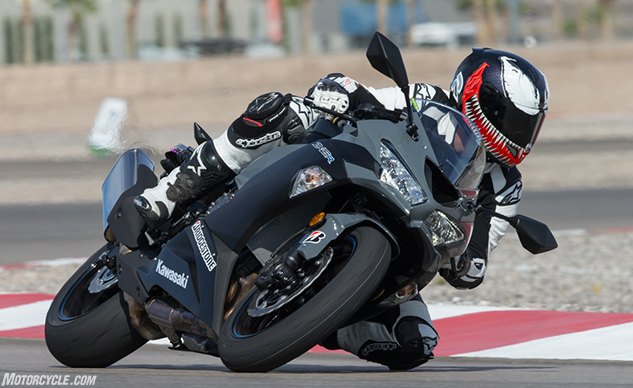
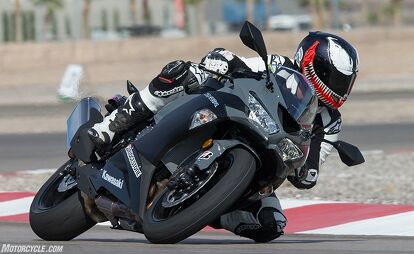






































































































































































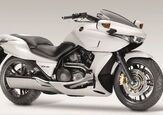
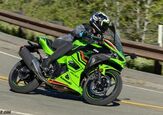
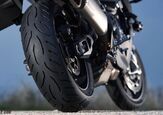
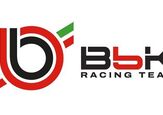
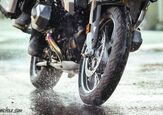

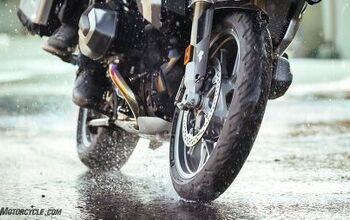
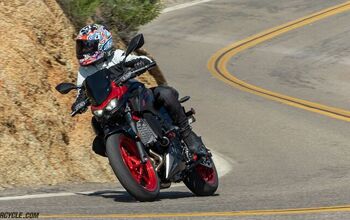
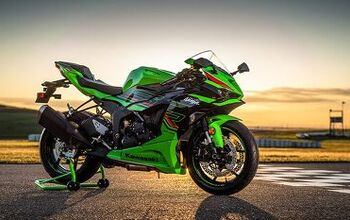
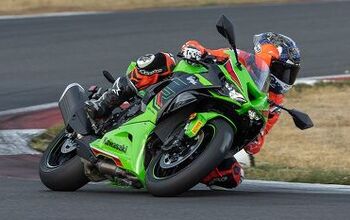
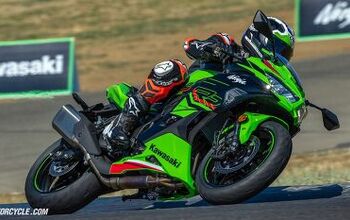
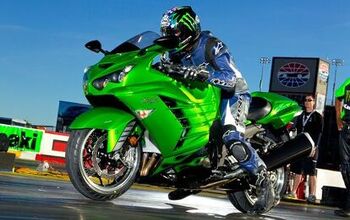
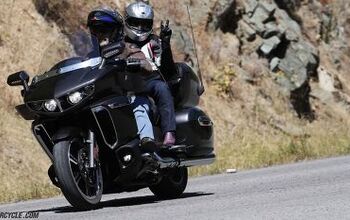
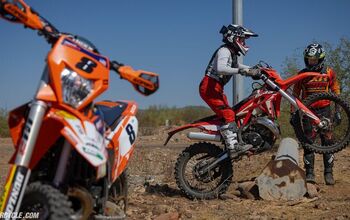
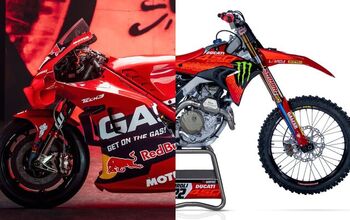
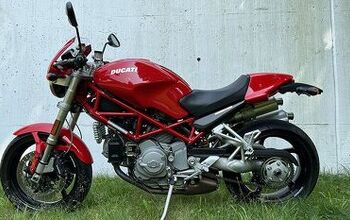


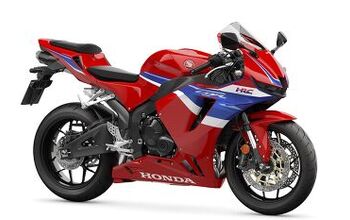
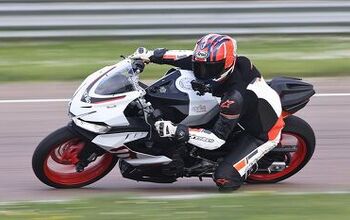
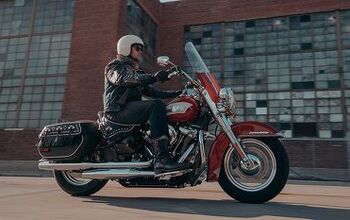

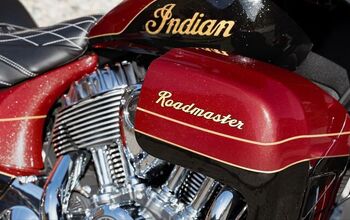
Comments
Join the conversation
I'd love to see them put this engine in other types of bikes, especially a sport tourer (bring back the ZZ-600!)
Hey Trizzle,
Is MO going to sell these stickers? Probably not, huh.
Any moron could put one on his bike or helmet.
You wouldn't want the likes of DickRubble representing you.
http://www.motorcycle.com/b...